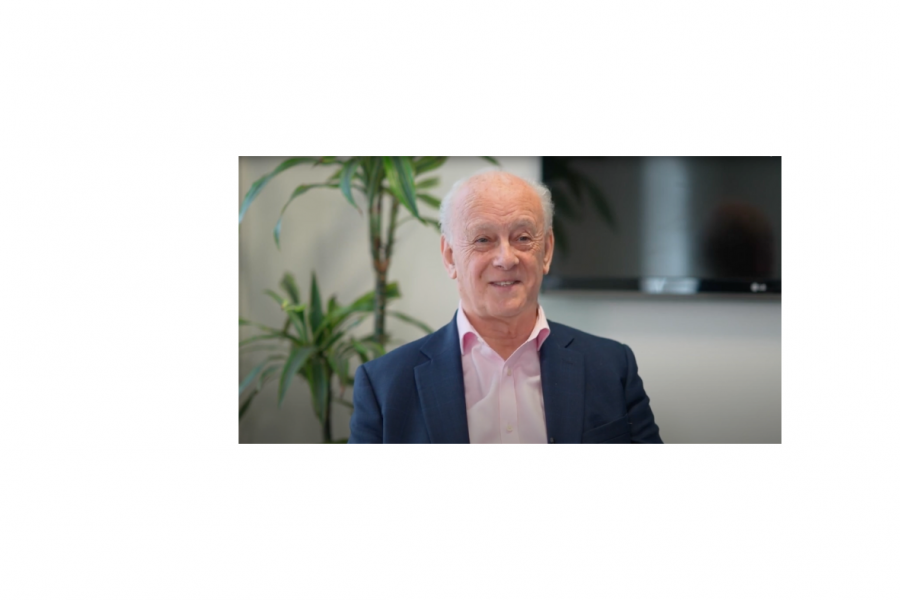WHEN DOES TIMBER MAKE SENSE?
Individuals can make a limited difference to the climate challenge with their daily choices. Yes, we can all do lots of green things in our lives – we can choose not to fly, drive electric cars and eat less meat – this is of course important, but in most instances the reality is that reducing professional emissions will have the biggest impact on achieving a low-carbon society.
As a structural engineer, I am personally responsible for managing huge masses of carbon dioxide. With the strike of a pen, I could add hundreds of tonnes of CO2 into the atmosphere – or make significant savings. That is why it is so crucial that those of us who specify buildings recognise the enormous importance of choosing lower-carbon solutions where possible.
Professional responsibility
Currently, the construction industry represents around 10% of total UK carbon emissions and directly contributes to a further 47%. As a result, the industry finds itself in a position of great accountability and influence with regards to the nation’s climate change efforts.
Those who design buildings and the structural engineers who determine the frame type have a huge responsibility within the construction industry. Typically, a UK structural engineer’s professional carbon footprint is around 160 times their personal carbon footprint for scope 1 and 2 emissions.


While the industry is taking steps to develop more sustainable working practices, there is a corresponding growth in demand for more sustainable development options from employers and investors and the industry needs to respond to that demand.
Enhanced public awareness of climate change, including a growing understanding of the economic risks it poses, has caused environmental, social and governance (ESG) considerations to rise up corporate agendas. This has resulted in a shift in perception, where ESG is no longer considered a risk to be managed, but rather is a significant driver that is informing company strategy for long-term growth. Traditional barriers to the adoption of more sustainable development, including perceived higher costs and a general lack of awareness, are being outweighed by the increasing importance of ESG in investment and procurement decisions.
Carbon sequestration
As we know, when trees grow they absorb carbon dioxide from the atmosphere locking it away as carbon in the cells of the tree. The reporting of this carbon sequestration is often a source of debate with potential confusion and inconsistency. This often stems around when the carbon sequestration is considered. To help demystify this life cycle analysis can be used which breaks a product’s life cycle in stages. The standard used for this, BS EN 15978, can be broadly broken down into the following modules.

Module A dominates the life cycle emissions, particularly as we see decarbonisation in the operational aspects found in module B. Steel and concrete require a high-energy production process, but energy consumption for timber is also significant due to the harvesting, drying and sawing. Confusion with timber occurs as the amount of carbon stored within wood can be greater than the module A emissions and in some reporting is quoted as immediately carbon negative. This approach would mean that using timber excessively in a building is better for the environment – this is obviously not the case.
There are positives to sequestering atmospheric carbon within long-term timber projects as they act as a carbon sink which is beneficial to the climate. For example, over a 50-year harvest cycle in a managed forest a new tree(s), that has replaced the harvested tree, grows large and sequesters carbon from the atmosphere thereby achieving a carbon negative position. After 60 years of the building’s use, carbon is potentially released back into the atmosphere as the building is either sent to a landfill or burnt in a biomass boiler.
However, in 60 years, it could be appropriate to consider that carbon capture technologies will mean that no further carbon is emitted at the end of the life of the building. Consequently, the timber building remains carbon negative due to the carbon sink of the replacement tree(s) – steel or concrete cannot do this. It should also be noted that an efficient timber design, one which has reasonable grids and optimised design, typically has a lower embodied carbon than either steel or concrete buildings.
Accounting for sequestered carbon is a significantly debated subject, and there is much confusion and inconsistency surrounding it. Reporting sequestration alongside the reported figures of module A or a negative emission can generate the belief that using timber in excess is beneficial to the atmosphere. However when designed efficiently timber frames can be a much better option than steel or concrete frames.

At Ramboll we present our carbon figures in a clear and transparent manner so that clients can make informed decisions about the carbon impact of their projects.
At this point in time, timber currently can offer a lower carbon solution than either concrete or steel with timber having the opportunity to be carbon negative over a 50-year cycle.
If we specify and construct more timber buildings, this will buy us time against climate change to allow technologies to develop to an appropriate level until we can potentially utilise permanent carbon storage technologies or the expected lowering of embodied carbon of concrete and steel in the future.
Currently, timber is an incredibly effective and sustainable building material. However, it is equally important to understand that there isn’t an infinite supply, so attention must be paid to ethical forestry and timber sourcing to safeguard the future of timber as a material.
We currently have the understanding and tools to rationalise our design decisions with respect to the embodied carbon and, for now, timber buildings certainly form part of the solution in addressing the climate crisis.
For more information please visit www.ramboll.com



